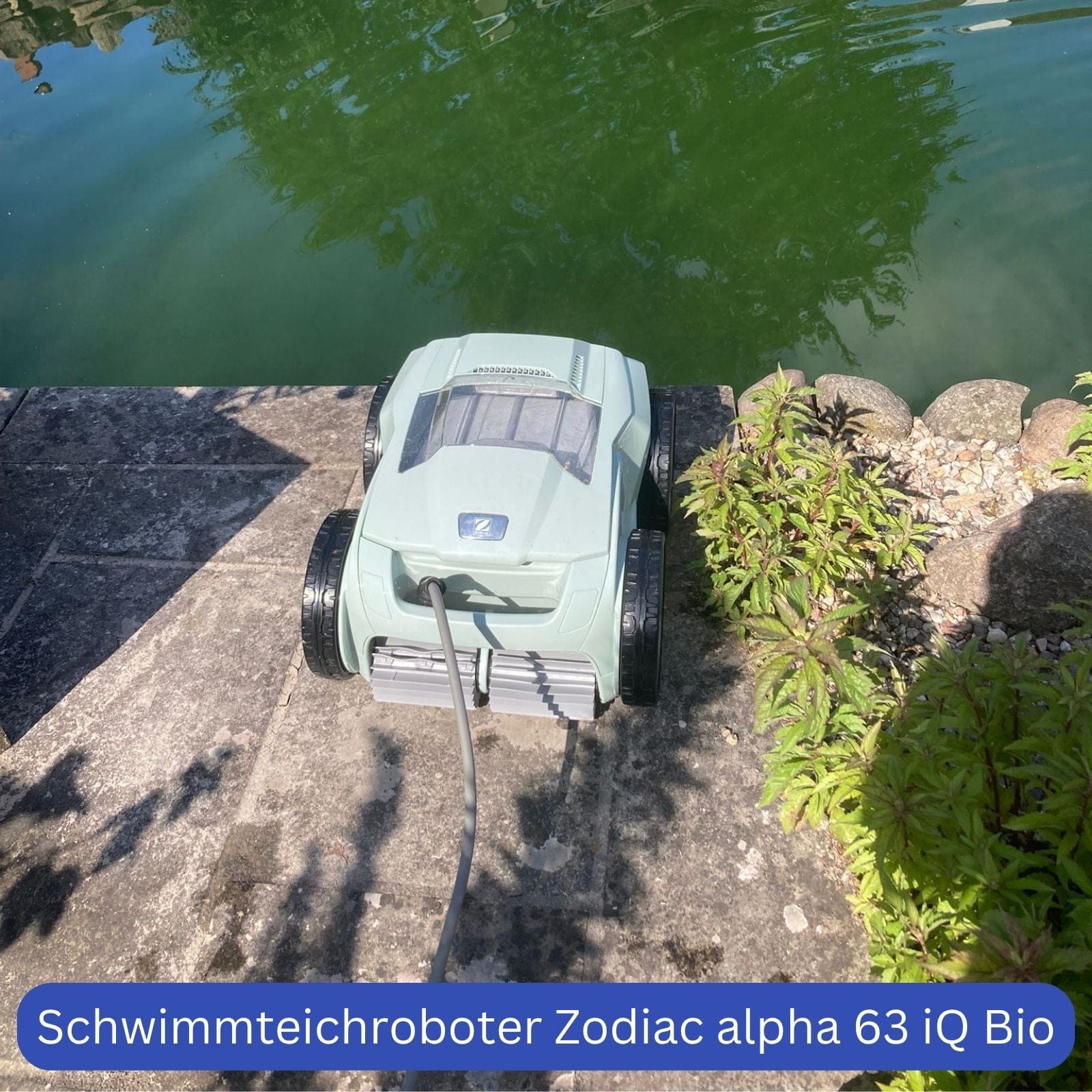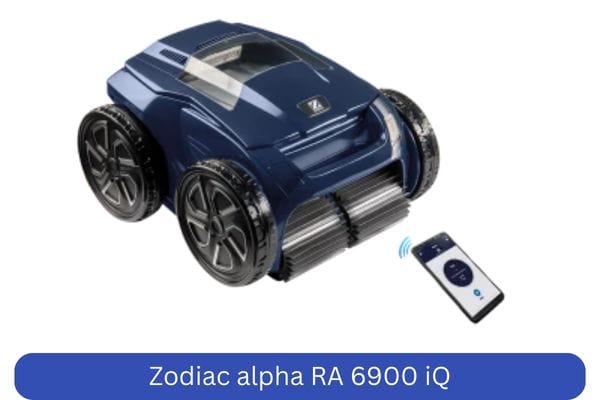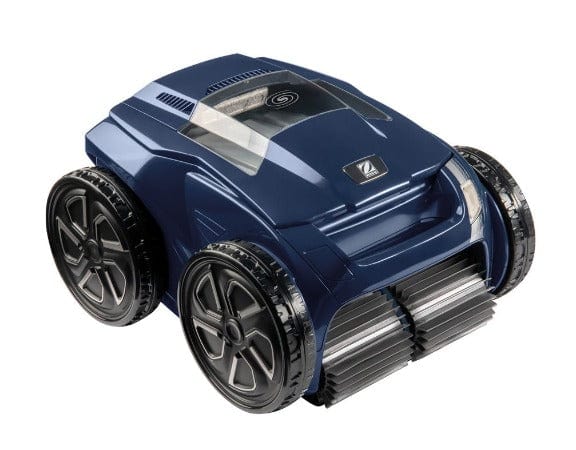Filters
Filters
Pool robot with cable
What are corded pool robots?
Corded pool robots are automated cleaning devices specifically designed to clean swimming pools effectively and efficiently.
They are connected directly to a power source and are equipped with a cable that provides them with the necessary energy to work for long periods of time without interruption.
These devices are capable of cleaning the floor, walls and sometimes even the waterline of a pool.
They use advanced technologies such as powerful motors, rotating brushes and integrated filtration systems to remove dirt, algae and deposits from the pool water.
A typical feature of corded pool robots is the long, floating cable, which allows flexible movement within the pool without the need to recharge the device.
Many models are equipped with cable management systems that prevent tangles and facilitate use. They are suitable for both residential pools and large commercial pools. Additionally, they are robustly constructed and often designed for continuous use, making them a long-lasting investment.
By connecting to the power source, these devices can also be equipped with more powerful motors that enable even more intensive cleaning.
This makes them particularly suitable for heavily frequented pools where regular and thorough cleaning is required.
No time for long texts? Take the pool robot quiz and you'll know in three minutes which of the tested robots is the best for your pool.
TO THE POOL ROBOT QUIZAdvantages of using a pool robot
Using a pool robot offers numerous advantages for pool owners:
- Time savings: Robotic pool cleaners clean the pool automatically, so pool owners spend less time on manual cleaning. This is especially beneficial for larger pools where manual cleaning would be very time-consuming.
- Effective cleaning: Thanks to advanced technologies such as rotating brushes and powerful pumps, pool robots remove even stubborn dirt such as algae, small particles and even oily residues that are often overlooked by conventional cleaning systems.
- Protects pool equipment: Because pool robots operate independently of the pool filtration system, they reduce the strain on the pool's filtration system, extending its lifespan and reducing maintenance. This is a significant advantage, especially for older pools.
- Cost-effectiveness: Although the initial cost of a robotic pool cleaner may be higher, long-term savings are achieved through reduced maintenance costs, fewer chemical cleaners, and lower water consumption. Effective cleaning minimizes the need for frequent water changes and expensive pool repairs.
- Environmentally friendly: Modern pool robots are energy-efficient and minimize water consumption, as fewer backwashes of the filtration system are required. Some models even offer environmentally friendly programs specifically designed to save energy and resources.
- Convenience: With preset cleaning programs and automated schedules, robot pool cleaners can work at the time that's most convenient for the owner. Some models can even be controlled via an app, making them even easier to use.
Difference between corded and battery-powered pool robots
Choosing between a corded and battery-powered pool robot depends on individual needs and preferences. Here are the key differences:
- Energy supply:
- Corded pool robots: These devices draw their power directly from a power source, allowing for uninterrupted use. They are particularly suitable for large pools or intensive cleaning scenarios. The continuous power supply allows them to operate for hours without loss of performance.
- Battery-powered pool robots: These models are cordless and use rechargeable batteries. They are more portable but have a limited operating time, usually between 60 and 120 minutes. They require recharging after use, which can delay the cleaning process.
- Range and freedom of movement:
- Corded pool robots: Thanks to a long cord, these devices can easily clean even large pools. However, there is a risk of cord tangling, which must be taken into account when using them. Some models have automatic cord detangling functions.
- Battery-powered pool robots: Because they're cordless, they offer maximum freedom of movement, but they're limited by battery capacity. This can be problematic if the pool has larger or more complex areas.
- Performance and efficiency:
- Corded pool robots: These devices typically offer greater cleaning performance because they aren't limited by battery size or runtime. They can remove deeper debris more efficiently and often offer additional features such as waterline cleaning.
- Battery-powered pool robots: These are ideal for smaller pools or pools with uncomplicated geometry. Their cleaning performance may be lower due to limited battery life and less powerful motors.
- Flexibility and handling:
- Corded pool robots: These require a nearby power outlet and can sometimes be awkward to handle to avoid tangled cords. However, they offer long-term reliability.
- Battery-powered pool robots: Easy to use and ideal for users who prefer quick and uncomplicated cleaning. They are particularly suitable for occasional cleaning.
- Cost:
- Corded pool robots: Often cheaper to purchase, but require more infrastructure (power source). Their robust construction often makes them more cost-effective in the long run.
- Battery-powered pool robots: Typically more expensive, but offer greater mobility and ease of use. However, their maintenance costs may be higher due to battery replacement.
Criteria for choosing a cabled pool robot
Choosing the right corded pool robot depends on several factors. These criteria should be considered when making your decision:
- Pool size and shape:
- Depending on the size and shape of the pool, you'll need to choose a robotic cleaner that can efficiently cover the entire area. For large or oddly shaped pools, models with longer cables and advanced navigation systems are ideal. Some devices offer special programs for different pool shapes.
- Type of pollution:
- If your pool is frequently contaminated with coarse debris such as leaves, branches, or sand, you should choose a robot with powerful suction and robust brushes. Models with microfilters are particularly suitable for fine particles such as pollen or algae. Some models also have different filter inserts for specific requirements.
- Cable length and cable management system:
- The cable must be long enough to cover the entire pool. An integrated cable management system helps prevent tangles and makes the robot easier to use. This is especially important for large pools.
- Energy efficiency:
- Modern pool robots are often very energy-efficient. Devices with low power consumption and intelligent cleaning programs can save on electricity costs in the long run. Some models automatically adjust their performance based on the level of dirt, saving additional electricity.
- Ease of use and maintenance:
- A user-friendly pool robot should be easy to install and operate. Maintenance-friendly models allow quick access to filters and brushes for cleaning and replacing wear parts. Devices with intuitive user interfaces or app control are particularly convenient.
- Additional features:
- Some robotic pool cleaners offer additional features such as waterline cleaning, programmable schedules, or remote control options. Such features can significantly increase convenience and efficiency.
By considering these criteria, you can ensure that the selected pool robot is optimally tailored to the individual needs of your pool and delivers good long-term results. With the right selection, pool cleaning becomes not only easier, but also more effective and resource-efficient.
Comparison of cable-operated pool robots
A comprehensive comparison of corded pool robots is crucial for choosing the best model for your individual needs. Here are the key aspects:
- Overview of different models and brands:
- The market for corded pool robots offers a wide variety of models from different manufacturers. Well-known brands such as Dolphin, Zodiac, and Maytronics have made a name for themselves through their quality and innovation. Each model has specific strengths, such as particularly powerful motors or high user-friendliness.
- Some manufacturers offer specialized models for specific pool types, such as saltwater pools. Others offer universal devices that can adapt to any pool environment.
- Comparison of performance features:
- Motor power: The motor power of a robotic pool cleaner influences its suction power and cleaning efficiency. Devices with more powerful motors can easily tackle even stubborn dirt and large amounts of debris.
- Cleaning speed: The speed at which a robotic pool cleaner can clean a pool varies depending on the model. High-end devices can completely clean a standard pool in less than two hours.
- Filter system: Robotic pool cleaners also differ in their filtering capacity. Fine filters are suitable for microscopic particles, while coarse filters effectively remove leaves and larger debris.
- Navigation system: Many modern models are equipped with intelligent navigation systems that ensure efficient cleaning by calculating the optimal route through the pool.
- Price-performance ratio:
- The price of a robotic pool cleaner depends on its features and the quality of its components. High-end models often cost more, but offer durable materials, advanced features, and better cleaning results.
- A good value for money means a device that delivers the desired cleaning performance without breaking the bank. It's worth comparing models to find the best combination of price and performance.
- Additional costs such as spare parts and maintenance should also be taken into account when making your purchase decision.
A careful comparison of the models helps you choose a corded pool robot that not only meets the requirements of the pool, but also provides long-term satisfaction and represents a worthwhile investment.
Installation and use
Proper installation and use of a corded pool robot is crucial to ensure optimal cleaning performance and maximize the lifespan of the device. Here are some important considerations:
- How to install a wired pool robot:
- Preparing the pool: Make sure there are no large objects, such as toys or branches, in the pool that could hinder the robot's work.
- Connecting to the power source: Connect the pool robot to a grounded, water-protected outlet. If necessary, use a suitable splash-proof extension cord.
- Positioning the robot: Carefully place the robot in the water and let it sink slowly to prevent air from remaining trapped inside.
- Power on and calibration: Turn on the robot and let it calibrate itself, if the model has this feature. Some devices may take a moment to detect the size and shape of the pool.
- Tips for efficient use:
- Regular cleaning: Use the pool robot regularly to avoid the accumulation of stubborn dirt.
- Programmable schedules: Many models offer the ability to set cleaning times in advance. Use this feature to schedule cleaning outside of pool usage hours.
- Cable management: Make sure to check the cable regularly during use and untangle it if necessary to avoid damage.
- Filter maintenance: Clean the robot's filter unit after each use to maintain the device's efficiency and avoid odors.
- Safety precautions when using:
- Use in water: Only operate the pool robot when there are no people in the water to avoid possible injuries.
- Cable safety: Make sure that the cable is not pulled over sharp edges and that it is not crushed.
- Power supply: Always use a grounded outlet and avoid use in damp or rainy conditions.
- When not in use: Turn off the device and unplug it before removing the robot from the water or servicing it.
Proper installation and careful handling of the pool robot not only ensure optimal cleaning results, but also contribute to the safety and longevity of the device.
Care and maintenance
Proper care and maintenance of a corded pool robot is crucial to maintaining its performance and longevity. Below are some important steps:
- Cleaning the filter and brushes:
- Filter cleaning: Remove the robot's filter after each use and rinse it thoroughly with clean water. This prevents dirt and debris from accumulating, which could impair filter performance.
- Brush care: Check the brushes regularly for wear or damage. Remove any hair, leaves, or other debris that might get caught. Replace worn brushes promptly to maintain cleaning performance.
- Inspect the cable for damage:
- Regular inspection: Check the cable for cracks, pinches, or other damage. A damaged cable can be a safety hazard and should be repaired or replaced immediately.
- Cable management: Avoid tangles and knots in the cable. Neatly roll up the cable after each use and store it in a dry, protected place.
- Regular maintenance intervals:
- Manufacturer recommendations: Follow the maintenance intervals specified by the manufacturer. Some models require an annual inspection by a qualified dealer to ensure that all components are functioning properly.
- Long-term storage: If the robotic pool cleaner will not be used for an extended period, clean it thoroughly and store it in a dry place. Remove any remaining water from the unit to prevent corrosion or mold growth.
By following these care and maintenance measures, your pool robot will remain in perfect condition and deliver optimal cleaning results in the long term.
Common problems and solutions
Even high-quality corded pool robots can occasionally experience problems. Here are the most common problems and their solutions:
- What to do if cables are tangled?
- Problem: The robot's cable tends to become tangled during use, which limits the device's freedom of movement and can lead to damage.
- Solution: Use a model with integrated cable management or swivel joints that prevent tangling. Make sure to completely unravel the cable before each use and neatly coil it after use. Place the robot in the center of the pool to ensure even distribution of the cable.
- How to repair a robotic pool cleaner if it is not working properly:
- Problem: The robot does not start, does not move properly, or does not clean the pool effectively.
- Solution: Check the power supply and make sure the outlet is working. Check if the filter is clogged or the brushes are blocked. Thoroughly clean all moving parts. If the problem persists, consult the user manual or contact the manufacturer's customer service.
- Spare parts and their availability:
- Problem: Wear parts such as brushes, filters or cables need to be replaced but are not easily available.
- Solution: Buy pool robots from reputable manufacturers that offer spare parts and accessories through their distributors or online stores. Keep the robot's model number and serial number handy to order the correct parts. Keep frequently used spare parts, such as filter cartridges or brushes, in stock to avoid downtime.
By taking proactive measures and quickly troubleshooting, you can ensure that your pool robot is always ready for use and offers optimal performance.
At Poolstark, we specialize in battery-powered pool robots. We're happy to help you choose the best battery-powered pool robot for you.
Call us or make an appointment:




